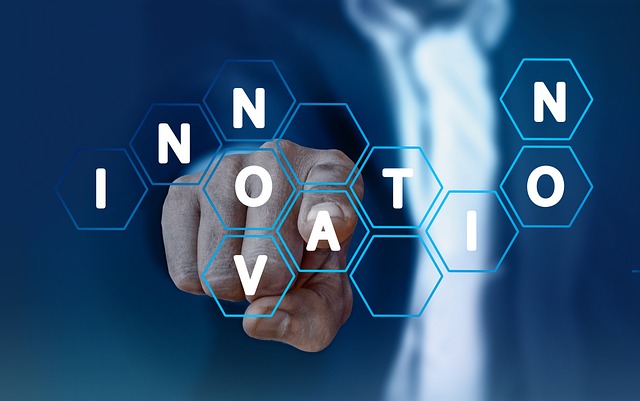Table of Contents
This guide explores the impact, functionality, and benefits of top software innovations in various industries, highlighting their significant role in shaping the modern world.
• Artificial Intelligence and Machine Learning
Artificial Intelligence (AI) and Machine Learning (ML) are key technologies in software innovation, mimicking human intelligence and making data-driven decisions. They are used in healthcare, finance, and entertainment sectors, enhancing accuracy and efficiency by analyzing vast data. AI can predict patient diagnoses, finance algorithms detect fraudulent activities, and personal assistants like Siri and Alexa simplify daily tasks. These technologies are expected to continue evolving for future robust capabilities.
• Blockchain Technology
Blockchain is revolutionizing the way we handle transactions and data security. Originally designed for cryptocurrency, blockchain’s transparent and secure ledger system makes it useful beyond digital currencies. It ensures secure data sharing in industries like finance, supply chain management, and healthcare. Blockchain’s decentralized nature means there is no single point of failure, reducing the risk of fraud and hacking. Smart contracts powered by blockchain automate and enforce agreements without the need for intermediaries. This technology also brings efficiency and accuracy to record-keeping processes. The rise of blockchain shows how important data integrity and security are in today’s digital landscape.
• Cloud Computing
Cloud computing has transformed IT infrastructure and software delivery. With cloud computing, businesses store and access data over the internet rather than on local servers. This reduces the need for expensive hardware, lowering costs and enhancing flexibility. Popular platforms like Amazon Web Services (AWS), Microsoft Azure, and Google Cloud offer scalable solutions tailored to various needs. Cloud computing supports remote work, providing tools for team collaboration and data access from any location. Additionally, it offers robust security features, ensuring data is protected against breaches. By enabling businesses to scale operations efficiently, cloud computing fosters innovation and growth across industries.
• Internet of Things (IoT)
The Internet of Things (IoT) connects everyday objects to the internet, allowing them to send and receive data. This innovation creates smarter environments in homes, cities, and industries. In smart homes, IoT devices like thermostats, doorbells, and lights can be controlled remotely, enhancing convenience and energy efficiency. In industrial settings, IoT sensors monitor machinery, predict maintenance needs, and enhance productivity. Smart cities use IoT to improve traffic management, waste management, and public safety. The key advantage of IoT lies in its ability to collect and analyze data in real time, driving informed decisions and optimizing operations. As IoT technology advances, its applications and impact are set to grow exponentially.
• Augmented Reality and Virtual Reality
Augmented Reality (AR) and Virtual Reality (VR) represent the next frontier in immersive experiences. AR overlays digital information onto the real world, enhancing how we interact with our environment. Popular applications include mobile games like Pokémon Go and AR-based navigation. On the other hand, VR immerses users in a completely virtual environment, often used in gaming, training simulations, and virtual tours. AR and VR technologies are increasingly used in education, providing interactive and engaging learning experiences. In retail, AR allows customers to visualize products in their space before making a purchase. These technologies offer new ways to interact with digital content, making experiences more engaging and informative.
• Cybersecurity Innovations
As cyber threats evolve, so do cybersecurity measures. Advanced cybersecurity solutions are vital in protecting sensitive data from breaches and attacks. Innovations in this field include multi-factor authentication, biometric security, and AI-driven threat detection. Multi-factor authentication adds an extra layer of security by requiring multiple verification steps. Biometric security uses unique physical traits like fingerprints or facial recognition to verify identity. AI-driven systems can detect and respond to threats in real time, minimizing damage. Additionally, encryption technology ensures data is unreadable to unauthorized users. By staying ahead of potential threats, these innovations help protect personal and organizational data, maintaining trust and security in the digital era.
• Software for Remote Collaboration
The rise of remote work has accentuated the importance of collaborative software. Tools like Zoom, Slack, and Microsoft Teams have become indispensable for virtual communication and project management. These platforms offer features like video conferencing, instant messaging, and document sharing, enabling teams to work together seamlessly from different locations. Project management tools like Asana and Trello help teams organize tasks, track progress, and meet deadlines. Such software not only enhances productivity but also fosters a sense of connection among remote teams. Integration with other applications further streamlines workflows, making remote collaboration more efficient and effective. As remote work continues to grow, these innovations will play a key role in sustaining productivity and teamwork.
• Conclusion
In summary, the landscape of software innovation is vast and constantly evolving. Each area of innovation, from AI and ML to remote collaboration tools, contributes unique benefits that push industries forward. AI and ML bring unparalleled analytical capabilities, while blockchain ensures data security and integrity. Cloud computing offers scalability and flexibility, crucial for modern business operations. IoT connects devices, making environments smarter and more efficient. AR and VR provide immersive, engaging experiences that transform interactivity and learning. Cybersecurity innovations fortify data protection in an increasingly digital world. Finally, collaborative software supports the growing trend of remote work, facilitating seamless teamwork across distances. As these technologies advance, they will continue to shape the future, driving progress, and offering new possibilities in various sectors. The continuous evolution of software will undoubtedly lead to even more groundbreaking innovations, further enhancing how we live and work.
